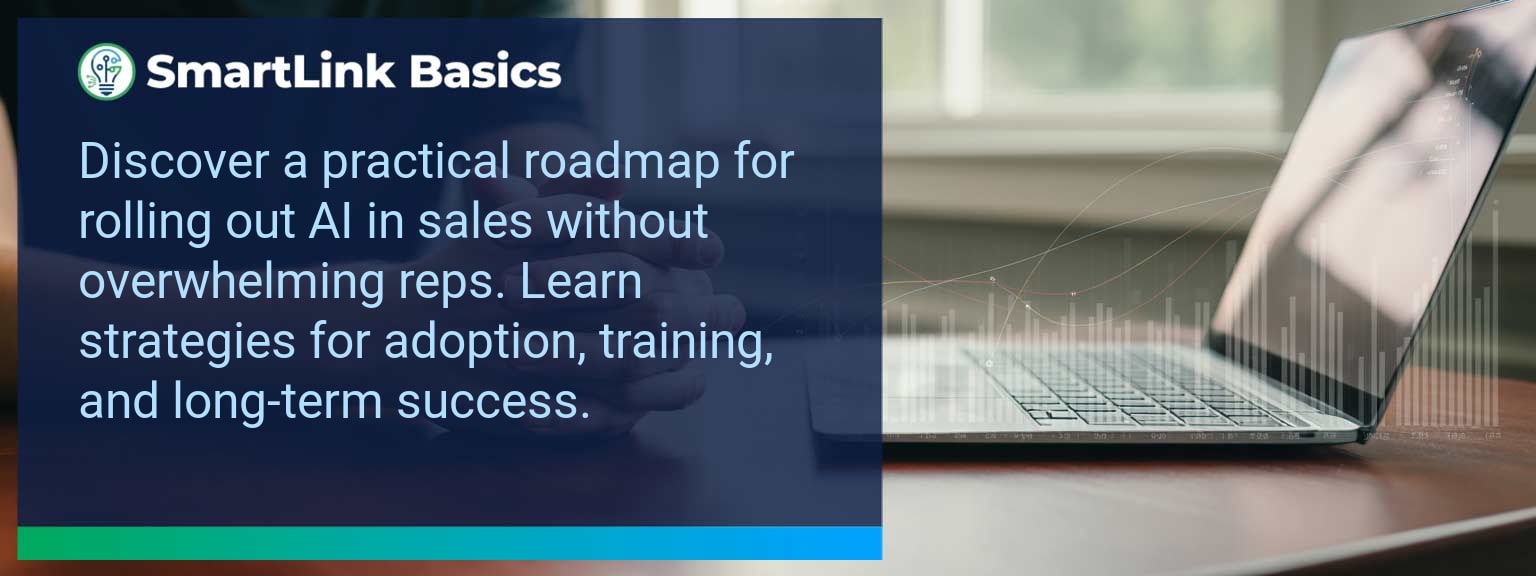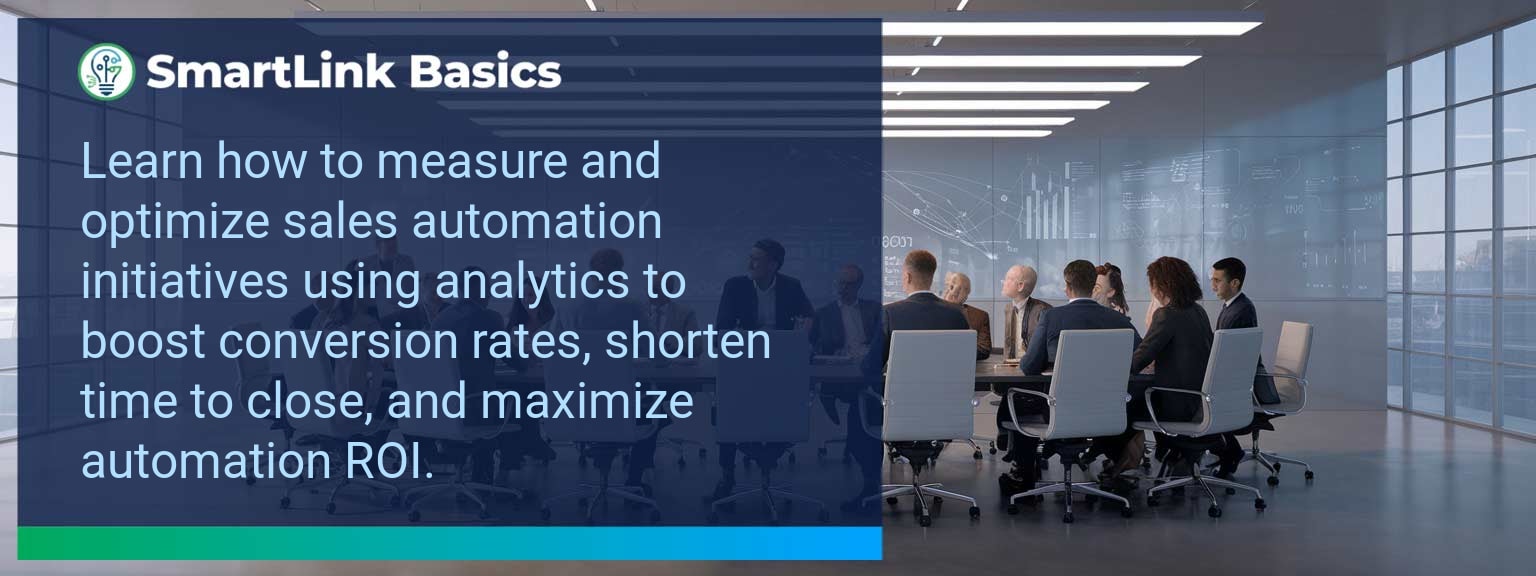Sales teams are under increasing pressure to deliver results with more precision, less time, and fewer resources. Organizations that implement AI in sales effectively are not just automating tasks, they are transforming performance across sales automation, CRM optimization, and revenue operations. At SmartLink Basics, we focus on equipping leaders to scale AI without overwhelming teams or risking adoption failure. This roadmap will show you how to integrate AI with clarity, improve sales efficiency, and build long-term growth capacity.
- Assess sales culture, readiness, and clear performance objectives.
- Start with low-risk, high-value AI use cases.
- Communicate benefits tied to revenue operations outcomes.
- Provide hands-on training in real-world sales workflows.
- Roll out in phases, measure adoption, and continuously iterate.
What Changed And Why It Matters Now With AI In Sales
AI adoption has moved from experimentation to performance expectation. Sales automation and CRM optimization are no longer optional—they are now essential for scaling pipeline visibility and improving revenue operations. However, introducing too much, too fast, risks overwhelming teams that already juggle quotas, workflows, and shifting buyer demands. A clear change management roadmap ensures adoption is smooth and sustainable.
For example, a team adding AI-driven lead scoring without training often faces mistrust. By instead aligning AI rollout with ICP targeting and coaching, leaders reduce resistance and generate early wins. The key is pacing adoption and tying use cases directly to measurable sales efficiency outcomes.
Redesign The Revenue Operating System With AI In Sales
Implementing AI is not about adding tools piecemeal–it’s about upgrading the revenue operating system. Leaders should rethink workflows, sales enablement processes, and digital transformation initiatives through the lens of AI integration.
ICP, Segmentation, And Targeting
AI-powered analytics make targeting sharper by highlighting buyer intent signals and segment-level opportunities. Teams can prioritize accounts with higher likelihood to convert and allocate efforts accordingly. This directly connects to pipeline velocity and smarter resource allocation.
Pipeline Architecture
AI tools can support deal forecasting and capacity planning. When mapped against sales automation tools, leaders gain visibility into friction points and can provide more precise guidance. For instance, AI-generated forecasts refine sales managers’ coaching by identifying risk accounts earlier.
Plays And Messaging
Workflow integration with AI-powered content generation ensures reps have the right messages at the right time. A strong example is AI-assisted email drafting where reps review, personalize, and send messages faster without sacrificing connection quality.
Operating Cadence
AI can streamline operating rhythms by automating call summaries, CRM data entries, and deal health dashboards. This not only improves performance analytics but frees leaders and reps to spend more time on strategic selling activities.
Common Barriers To AI Adoption In Sales
Many teams hesitate to adopt AI because of unclear ROI, poor change communication, or fear of job replacement. In practice, the primary barrier is overload—introducing multiple tools at once without aligning them to current workflows. Reps often abandon tools when they see duplication of effort or unclear value to their daily quota performance.
Leaders must address this by identifying a single workflow integration opportunity that addresses a real rep pain point. A good first move is replacing manual CRM updates with AI-driven automation, removing waste while increasing trust in system data quality.
A Phased Approach To Deployment
Rolling out AI gradually allows for calibration and prevents resistance. Start with one high-value but low-disruption use case. Once adoption is proven, expand to adjacent workflows. This builds cultural acceptance and ensures reps see the link between AI and sales efficiency.
For example, launch with AI summarization of sales calls. Once teams trust that automation, layer in AI-driven lead scoring or predictive pipeline insights. Each phase should have clear KPIs tied to revenue operations to validate success before scaling.
Measurable Business And Team Outcomes
Sales leaders seeking proof of value should define adoption metrics across leading, lagging, and quality categories. Without objective data, it is difficult to argue for further AI-enabled transformation or justify additional investments in sales automation tools.
| Category | Metric | Definition | Target |
|---|---|---|---|
| Leading | AI Tool Training Completion | % of reps completing AI onboarding sessions | 95%+ |
| Leading | AI Workflow Usage Rate | % of reps using AI-generated insights weekly | 80%+ |
| Lagging | Response Time Improvement | Reduction in average lead response time | 25% faster |
| Lagging | Pipeline Velocity | Increase in opportunities moving stage-to-stage | 15% increase |
| Quality | Reps’ Confidence Score | Survey insights on rep comfort using AI tools | 8/10+ |
| Quality | Workflow Integration Quality | % of reps reporting reduced duplicate entry | 90%+ |
Building A Long-Term AI Strategy
AI adoption is not a single project—it is an operating model shift. Leaders must view AI as a permanent component of sales enablement and digital transformation. Establishing governance, feedback loops, and performance analytics frameworks ensures sales automation stays aligned with evolving customer dynamics. Long-term strategy should include scenario planning, cross-functional integration, and playbooks that adapt AI to shifting market conditions.
Get the 90-day plan, coaching rubric, and dashboard template to operationalize AI in your enablement program.
Driving Sustainable AI Adoption In Sales Organizations
Rolling out AI in sales requires structured change management, clear communication, and stepwise implementation. By evaluating readiness, choosing high-value early use cases, and embedding workflow integration, leaders prevent overwhelm and accelerate adoption. The next step is to design your roadmap and adopt proven playbooks from AI-driven sales enablement resources from SmartLink Basics that deliver measurable ROI.









